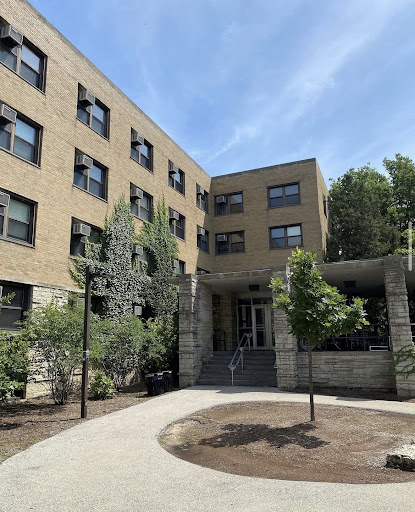
When it comes to getting housing at Northwestern, may the odds be ever in your favor.
The housing process begins in early spring, with students receiving a randomly generated priority number. Upper Division students, or third and fourth-year students, are given the first pick of dorms, and second-year students choose on the days following. This process sounds fair, but when it begins, chaos ensues.
Students have to prepare beforehand to pick their rooms. They must submit a roommate request if they want a double or select all group members if they’re going to risk trying to get a suite, like Kemper or Schapiro. Once students receive their priority number, they have to figure out which roommate has the best number; this will be the student going off into the housing games.
Time slots are allotted by groups of priority numbers. I’ll be honest, I struggled to find this information at first and was a bit confused once I did find it. Luckily, people talk, information gets deciphered and things work out. That is if they understand the schedule.
After figuring out your time slot, you'd better make sure you’re free during it. Students skip class, stare at the Housing Portal landing page for hours, and prepare to fight for their top-ranked dorm. When your time slot arrives, be prepared for lagging drop-down menus and glitching “lock my selection” buttons. Did you remember to accept your roommate’s request? No time to check now. You have to focus on getting a room in one of the dorms you ranked.
I spoke to Weinberg student Kaya Payton, who had to select her second-year housing with a priority number of 1847. She described her experience as terrible and disappointing. By the time her slot rolled around, the only rooms available were in three dorms she hadn’t ranked.
“The dorm I had to select, it was never even on my radar. I had hoped for anywhere else but given my options I had to pick it,” she said.
Payton had to select a room in Bobb Hall, where she resides this year.
“It might be a fun dorm if you’re a freshman, but definitely not somewhere I planned to live again,” she said.
The more students I spoke to, the more similar experiences of disappointment emerged. I saw the Class of 2026 GroupMe buzzing throughout the day, with students expressing concern over room type, location and overall discontent with their rooms. Students have created their own room swap lists in hopes of helping them get to the rooms they want, while others turn to more creative solutions, like offering up large sums of money to persuade others to make the switch. The school's solution for this frustration is an extensive room change waitlist: This waitlist currently has around 240 students on it.
But for the lucky ones, things worked out exactly as they hoped for. In my classes, I overheard the joyous shouts and saw the silent celebrations as people easily picked their suite-style rooms and glorious singles. My priority number was 612, and although I didn’t get a dorm I ranked, I had gotten one that checked enough of my boxes that I felt content at the end of the day. But still, I have to agree that the process was super stressful and distracted me from my classes that day.
Students are left with many questions after the process, like how the school assigns numbers in the first place and if it's all as random as it’s made out to be. How does the staff decide how many rooms per dorm are allotted to incoming first-years versus how many to allot to returning students? It could be beneficial for the school to share some insight with students about why the process was designed this way and why there haven't been improvements despite consistent complaints every year.
The housing games may be short-lived, but the despondency still lingers around campus. Some have already accepted that next year will not go as planned, while others continue to fight for the dorm that they want.